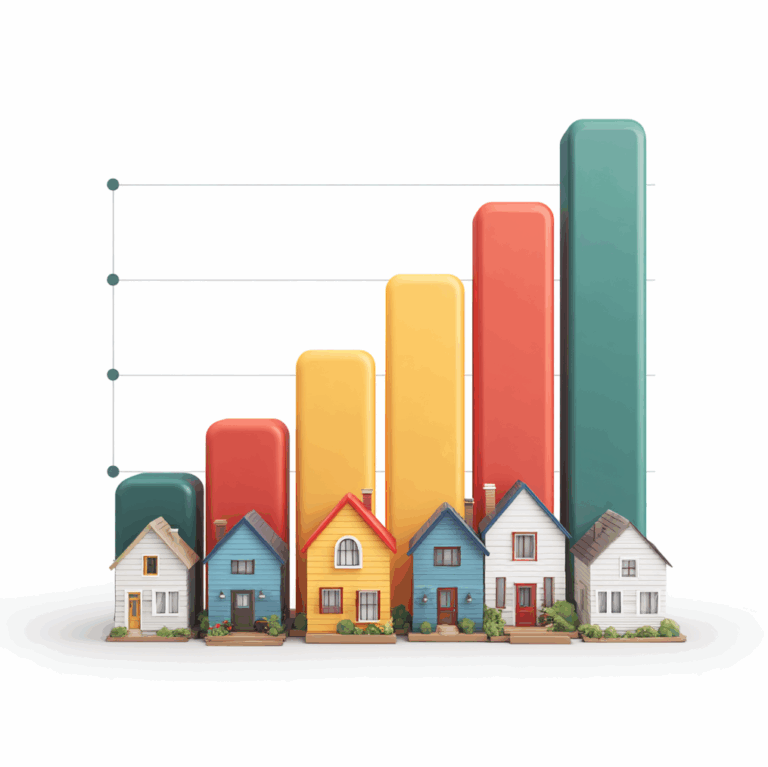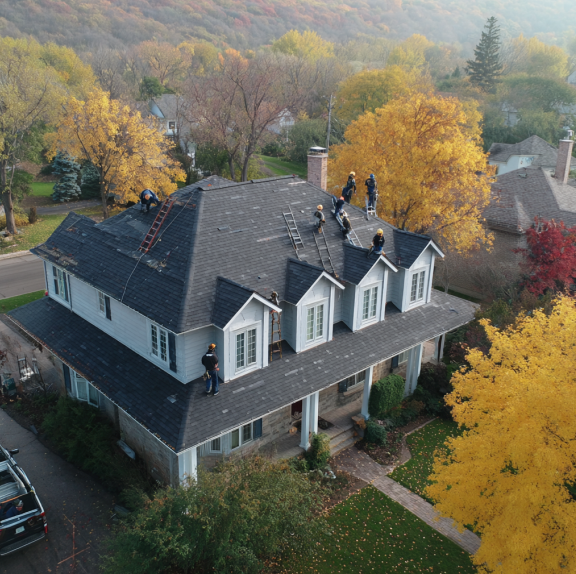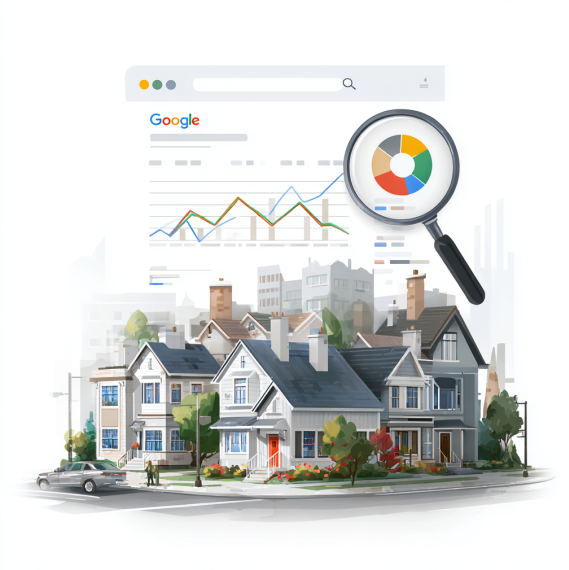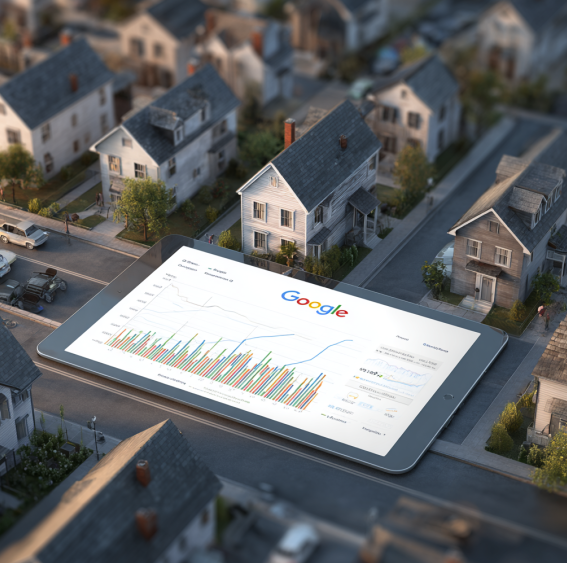In September 2025, many roofing and home service business owners were stunned when their Google Search Console reports showed a sharp drop in impressions, even though their average position improved. Initially, that seems contradictory: how can your visibility fall while your ranking improves?
The cause: around September 9–12, 2025, Google made a significant reporting change, namely, disabling or removing support for the &num=100 parameter in search results. That tweak triggered widespread drops in reported impressions and artificially improved average positions in many accounts.
At the same time, Google also removed built-in reporting for several structured data types (Course Info, Estimated Salary, Learning Video, Special Announcement, Vehicle Listing, Claim Review) because those types are no longer displayed in search results.
These changes highlight why roofing contractors should understand how to read Google Search Console reports correctly and focus on the metrics that actually drive calls and contracts.
Key Takeaways:
- A clear explanation of the September 2025 Google Search Console Reports update
- What the &num=100 parameter is: a setting that let users load 100 results per page, inflating impressions with deep-page rankings
- How to interpret distorted data versus real performance: older reports counted low-value impressions, while new reports reflect true visibility
- Tactical guidance on how to increase organic traffic, which metrics matter most, and how to move forward with confidence
Need help understanding your marketing data? JobNimbus Marketing is here to help.
What do most roofing companies miss about digital marketing results?
Most roofing companies miss that impressions don’t always reflect real visibility
Many business owners panic when they see a drop in impressions, but impressions are a noisy metric, especially when underlying reporting has changed. Impressions measure how often your site technically appeared in search, not how many homeowners actually saw it or acted on it. Impressions are a leading indicator, a vanity metric, that can provide valuable insight, but should not be used as a true measurement of performance. That’s why relying too heavily on impressions can create a false sense of success or failure.
- SEO (Search Engine Optimization): Helps your business surface naturally in search for key homeowner terms like “roof repair company [city]” or “storm damage roof replacement.” Strong SEO builds long-term visibility and credibility.
- PPC (Pay-Per-Click Ads): Paid ads, such as Google Ads, delivers immediate placement at the top of results but requires continuous spending. Once you stop paying, your visibility disappears.
- Lead generation: The true end goal. Marketing should turn searchers into calls, inspections, and signed projects, not just clicks or page views.
A roofer on page 8 might still log an impression in older reporting, but realistically, no homeowner was scrolling that far to find a contractor. Because Google’s reporting now filters out low-value or “deep-page” impressions, your impression count may shrink even if real user visibility hasn’t changed.
The key takeaway: focus on the signals that reflect real opportunity, such as clicks, calls, and conversions. Impressions should be treated as directional data, not the main measure of success. When reporting changes, the most important question isn’t ‘Did my impressions go down?’ but ‘Am I still generating the leads I need to grow my roofing business?’ For contractors new to SEO for roofing companies, this also raises another important question: what is organic traffic, and how can it be measured in terms of real leads rather than vanity metrics?
Why did impressions drop in September 2025?
Impressions dropped because Google removed the &num=100 parameter
Many business owners were confused when their organic impressions dropped in Google Search Console reports because Google removed the &num=100 parameter. This change immediately caused widespread declines in reported impressions across many roofing websites.
What is the &num=100 parameter?
The &num=100 parameter was a Google Search setting that let users and SEO tools view up to 100 results on a single page instead of the default 10. Many SEO platforms relied on this parameter to track rankings and impressions across a larger set of search results. When Google disabled it in September 2025, Search Console stopped counting impressions for results buried beyond the first page.
For roofing companies, this matters because older reports may have shown your website appearing hundreds or thousands of times, even if most of those impressions came from page 5, 6, or 10, where no homeowner was likely to click. Now, Search Console only reports impressions from the standard view, giving you a more realistic picture of visibility where it actually counts.
Why does this change matter for roofers?
- Apparent declines don’t always mean lost visibility: You may see fewer impressions reported, but that doesn’t mean fewer homeowners are finding you. It just means irrelevant deep-page data is no longer inflating your numbers. This makes local map rankings even more valuable
- Cleaner data for decision-making: By removing noise from the reports, Google is pushing businesses to focus on high-value metrics like clicks, calls, and conversions.
- A reset for SEO tools: Many rank-tracking tools that relied on the &num=100 parameter are now disrupted, meaning reporting dashboards may show inconsistency until they adapt.
- Better alignment with user behavior: Homeowners rarely go past page 1 when looking for a roofer. Your reports now reflect this reality more accurately.
It’s not yet confirmed whether this change is permanent, but most analysts expect it to remain in place long-term. Roofing companies should adjust expectations accordingly and educate their teams on why impression numbers may look smaller moving forward.
Why did ‘average position’ improve at the same time?
Average position improved because lower-ranked impressions were removed from reporting
Because impressions from deeper pages are no longer being counted, the denominator in the average position calculation shrinks. That means the average position metric tends to improve, even though the underlying rankings may not have changed.
This effect is somewhat “artificial” in that it’s not that Google elevated your position overnight, but rather that it removed many weak, low-visibility impressions from the equation. That makes your reported position metrics look stronger.
What does this mean for roofing businesses?
- Perception of improvement: Reports may show your roofing company ranking higher on average, but this doesn’t necessarily reflect real SEO progress.
- More useful visibility metrics: By cutting out page 5–10 impressions that were unlikely to generate clicks, Google has made the average position metric more representative of how homeowners actually find you.
- Risk of misinterpretation: If you only look at average position, you might believe your site made big ranking gains. Without context, this could lead to poor strategic decisions, like scaling back marketing when it’s not the right time.
How roofers should respond
Roofing contractors should use average position as a directional measure, not the sole indicator of success. Pair it with:
- Click-through rate (CTR): Are more homeowners clicking when you show up?
- Leads and conversions: Are those clicks turning into calls and inspection requests?
- Local pack visibility: Are you showing up in the Map results where most homeowners click first?
By looking at the full picture, you’ll avoid the trap of assuming your business is suddenly ranking better when, in reality, the reporting just became more accurate. This shift also highlights why it’s important to understand how to get organic traffic to your website through strategies that focus on visibility where homeowners actually click.
How often does Google make changes like this?
Google makes reporting tweaks periodically to refine accuracy
This isn’t the first time Google has revised Google Search Console reports to refine accuracy. Over the years, metrics have been adjusted to better reflect real user behavior and search visibility.. Although the &num=100 removal is unusually dramatic, Google frequently adjusts how metrics are calculated, how structured data is tracked, or how different search appearances (like featured snippets, FAQs, or rich results) are classified.
For roofers and home service companies, these shifts may not always change your rankings, but they do change how success looks on paper. A report showing fewer impressions or sudden jumps in position might simply reflect Google’s updated way of counting, not a true shift in visibility.
Why does this matter for roofing businesses?
- Avoid false alarms: A sharp drop in impressions or a spike in position might be a reporting change, not a performance swing.
- Stay focused on outcomes: Google’s updates underline the need to measure what matters most — calls, leads, and completed jobs.
- Expect ongoing adjustments: Google’s mission is to give businesses and searchers cleaner, more useful data. That means contractors should expect occasional changes, big and small.
- Educate your team and clients: Misreading these changes can lead to bad decisions, like cutting budgets when the real issue is just reporting noise.
The lesson: treat reporting updates as reminders to double-check your metrics and ensure you’re making decisions based on meaningful results, not surface-level numbers.
What search performance factors still matter most?
The most important search performance factors are relevance, trust, location, and engagement
Despite reporting changes, Google still ranks pages based on the same fundamentals. To understand these, it helps to first know what is organic traffic: it’s the stream of visitors who find your site through unpaid search results. For roofing businesses, these signals are what determine whether you show up when a homeowner urgently needs help.. To maintain or improve organic visibility, focus on these core areas:
- Proximity to the searcher (location signals): Google gives priority to businesses closest to the homeowner searching. If someone types “roof repair near me” in Dallas, a roofer in Houston won’t appear. Roofing companies should clearly define service areas on their website, keep Google Business Profile service zones up to date, and build city-specific landing pages to cover each target market.
- Reviews and authority (trust signals): A steady flow of 4- and 5-star reviews sends a powerful trust signal to both Google and potential customers. Beyond reviews, authority also comes from accurate online citations (like your name, address, and phone number being consistent across directories) and from backlinks earned by being featured in local news or industry associations.
- Content relevance: Google rewards pages that directly answer homeowner questions. Roofers should publish blogs and service pages that explain issues like “how to tell if a roof has hail damage,” “average roof replacement costs,” or “how long shingles last in [City].” Content should be written in clear, accessible language that helps homeowners, not just stuffed with keywords.
- User engagement: Click-through rate, time spent on your site, and bounce rates all tell Google how valuable your content is. If a homeowner clicks your page and quickly leaves, that signals your site didn’t deliver. Roofing companies can improve engagement by using before-and-after photos, clear service explanations, and visible calls to action like “Schedule a Free Inspection.”
Even if impression counts are trimmed by reporting changes, these fundamentals remain the backbone of local SEO for roofers. A roofer who is trusted, relevant, local, and engaging will continue to win leads regardless of how Google shifts its reporting metrics.
What should roofing companies consider before choosing a marketing strategy?
When choosing a marketing strategy, roofing companies should evaluate budget, urgency, competition, and support
When a disruptive reporting change hits, the instinct is often to overhaul your strategy entirely. But you’re better off first testing whether your current approach still aligns with your business goals. A shift in reporting doesn’t mean your marketing has stopped working, it means you need to make sure your plan is built on the right foundation.
Here are key factors roofers should weigh before adjusting strategy:
- Budget: Roofing SEO and content marketing take consistent investment over time. If you only have resources for short bursts, you may see limited returns. On the other hand, a steady budget creates compounding benefits, including higher rankings, stronger local visibility, and more brand trust over the long haul.
- Support: Do you have a team member who understands SEO, paid ads, and content, or do you need outside expertise? Many roofing companies benefit from partnering with a specialized agency that can handle technical optimization, content creation, and lead tracking, freeing up owners to focus on running crews. Are you using a roofing CRM to ensure engagement with leads and tracking of projects?
- Lead urgency: If you need the phone ringing this week, PPC ads or storm-response campaigns may be the right fit. But if you want to dominate your market for years to come, SEO and organic traffic strategies should be at the core. A healthy marketing mix often includes both.
- Competition: In crowded markets where larger contractors already invest heavily in digital marketing, you’ll need a more targeted approach. This may include hyper-local landing pages, stronger review acquisition, or highlighting differentiators like workmanship warranties or same-day emergency response.
- Seasonality: Roofing demand fluctuates with storms, hail, and seasonal weather patterns. A smart strategy anticipates these cycles, ramping up content and ads ahead of peak demand while keeping visibility steady during slower months.
A reporting change doesn’t demand a strategy change, but it does demand clarity. By revisiting your goals, resources, and competitive landscape, you can ensure your marketing continues to drive the right leads, no matter how Google shifts its reporting.
How can roofers increase organic traffic after the September 2025 update?
Roofers can increase organic traffic by focusing on intent, local relevance, and lead quality
The September 2025 update was about reporting, not rankings. But it’s a timely reminder that success in roofing SEO comes from focusing on what homeowners actually search for and how they engage with your business online. If you’ve ever wondered how to get organic traffic to your website, the answer lies in aligning your content and local presence with homeowner intent.
1. Target homeowner-intent keywords
Targeting homeowner-intent keywords attracts qualified leads
Rather than chasing broad terms like “roofing,” focus on queries homeowners type when they’re ready to act. For example:
- “Roof repair after hail storm in [City]” — reaches storm-driven searches from homeowners who often need urgent service.
- “Average cost roof replacement [City] 2025” — connects with homeowners budgeting for replacement, often leading to inspection requests.
- “Emergency roof tarping [City]” — targets those dealing with active leaks or storm damage.
These searches come from homeowners further down the buying funnel. By aligning your content with their intent, you’ll capture organic traffic that is far more likely to convert into calls and contracts.
2. Keep your Google Business Profile current
Keeping your Google Business Profile current strengthens local reach
Your Google Business Profile (GBP) is often the first impression homeowners see, especially in Google Maps and the local pack. A neglected profile can cost you leads, while an optimized one signals professionalism and trust. Best practices include:
- Adjusting your service area regularly to cover the neighborhoods where you actively want business.
- Uploading project photos, including before-and-after shots, which both homeowners and Google love.
- Requesting fresh reviews after every completed project and responding promptly to all feedback.
- Posting weekly updates or seasonal offers, which show activity and keep your profile engaging.
For roofers, an active GBP is almost as important as your website. It can often drive direct calls without homeowners even visiting your site.
3. Build location-specific landing pages
Location-specific landing pages match homeowner queries more precisely
Generic service pages rarely rank well for multiple markets. To compete, roofing companies should create pages for each city, town, or neighborhood they serve. For example:
- “Roof Replacement in Oklahoma City”
- “Storm Damage Roof Repair in Little Rock”
- “Flat Roof Installation in Tulsa”
These pages should include:
- City and neighborhood references to establish relevance.
- Local testimonials and project case studies to build trust.
- FAQs that address local weather issues (hail in Texas, snow in Colorado, hurricanes in Florida).
This strategy tells Google exactly where you want to rank and reassures homeowners that you’re local — which is critical in roofing.
4. Publish seasonal blog content
Seasonal blog content answers homeowners’ timely questions
Roofing is seasonal, and your content should reflect that. Blogs not only boost SEO but also position you as the local expert homeowners turn to when problems arise. Consider posting about:
- Preparing roofs for winter, including ice dam prevention or snow load concerns.
- A hail damage inspection checklist after spring and summer storms.
- How extreme summer heat shortens shingle lifespan in southern states.
- The difference between emergency tarping versus full roof replacement.
These posts keep your site fresh, capture seasonal traffic spikes, and provide useful content you can repurpose in social media and email campaigns.
5. Track real leads, not just impressions
Tracking real leads ensures marketing is tied to business outcomes
Impressions may now look smaller due to the reporting change, but they were never the most important metric. What matters is how many homeowners actually contact you. To track that:
- Use call tracking to measure which campaigns drive phone calls.
- Add form tracking to see which landing pages generate inspection requests.
- Implement attribution tools to connect organic clicks to completed jobs.
This approach prevents you from making decisions based on vanity numbers. By focusing on leads and booked projects, you’ll know exactly what’s working — and where to invest more.
How can roofing companies move forward with confidence?
Roofing companies should focus on quality traffic, not inflated numbers
The &num=100 parameter removal and structured data reporting changes may have rattled your metrics, but they don’t have to rattle your results. The key is to understand that this update didn’t reduce your true visibility, it only changed how it’s measured. Homeowners searching for roof repair, replacement, or emergency services are still out there, and they’re still finding contractors who show up with strong, relevant content.
Here are the priorities roofing companies should focus on moving forward:
- Interpreting data with context: Don’t react to impression drops as if they’re lost leads. Train your team to view reports in light of Google’s changes and emphasize long-term trends over short-term spikes.
- Focusing on clicks, conversions, and business outcomes: A single homeowner who books a $15,000 roof replacement is more valuable than hundreds of low-quality impressions. Measure what moves the needle.
- Communicating transparently with stakeholders or clients: If you manage reporting for your team or subcontractors, explain why the numbers changed. Clear communication builds trust and prevents unnecessary panic.
- Adjusting tools and dashboards to match the new normal: Update rank trackers, dashboards, and KPIs so they align with today’s reporting reality. Avoid tools that still inflate impressions by simulating the old &num=100 behavior.
- Balancing short- and long-term strategy: Paid ads may provide immediate leads, but organic SEO, reviews, and content build the pipeline that sustains your business through slower seasons.
For roofing contractors, the bottom line is simple: keep focusing on visibility where homeowners actually look (page 1 results and local packs), create content that answers their questions, and track performance by leads and revenue, not just impressions.
Want to diagnose your losses and build a resilient marketing plan? Schedule your free strategy session today with JobNimbus Marketing.
FAQs About Google Search Console Reports for Roofing Companies
What is organic traffic and why does it matter for roofing companies?
Organic traffic refers to visitors who land on your website through unpaid Google searches. For roofing companies, knowing what is organic traffic is key to tracking long-term marketing success because it shows how many homeowners are finding you naturally without paid ads.
What was the September 2025 Google Search Console reports update?
The update removed or disabled the &num=100 parameter in search results, which led to large drops in reported impressions and artificially improved average positions.
Why did my roofing business impressions drop after the update?
Because Search Console no longer counts impressions from deeper pages that were previously accessible via &num=100, many sites show a drop even though real visibility may not have changed.
How did average position improve when impressions dropped?
Lower-ranked (deep-page) impressions were removed from the tally, so the average position metric is now calculated over a narrower, higher-visibility subset, making it appear stronger.
How did the change affect third-party SEO tools?
Many rank-tracking and scraping tools that relied on &num=100 are now disrupted and must run more queries or recalibrate their approach.
What structured data types were removed from Search Console reporting?
Google stopped reporting on six deprecated types: Course Info, Claim Review, Estimated Salary, Learning Video, Special Announcement, and Vehicle Listing.
Will removing those structured data types affect my rankings?
No. Google has said that dropping reporting does not impact ranking. You can keep using the markup if you wish; it just won’t show in Search Console or Rich Results tests.
What should roofers do differently now?
Expect reporting distortions, shift emphasis to metrics that matter (clicks, conversions), update dashboards, communicate clearly with stakeholders, and build a plan for how to increase organic traffic through intent-driven content, local SEO, and lead tracking—rather than reacting to impression drops alone
How do I get organic traffic to my website as a roofing company?
Roofing companies can deliver on how to get organic traffic to your website by publishing city-specific landing pages, optimizing Google Business Profiles, and posting seasonal blogs. These strategies attract homeowners actively searching for roofing help without relying on paid ads, like Google Ads or Facabook Ads.
Table of Contents
Keep on learnin'
Related Articles

How to Market a Roofing Company: A Stage by Stage Growth Guide

Winning the Offseason: Fall Roofing Marketing Strategies That Win Customers

Roofing Marketing Strategies: Timing Campaigns for Maximum Impact



